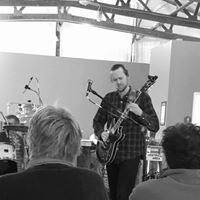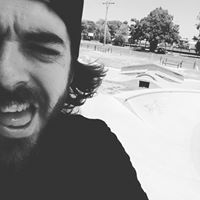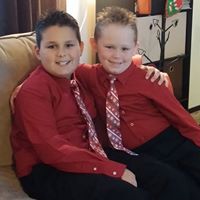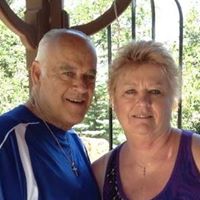Joseph L Casey
age ~86
from Winter Springs, FL
Joseph Casey Phones & Addresses
- Winter Springs, FL
- Rochester, NY
- Buffalo, NY
- Winter Spgs, FL
Lawyers & Attorneys

Joseph Casey - Lawyer
view sourceOffice:
Joseph H. Casey Attorney At Law
Specialties:
Family Law
Domestic Relations
Adoption
Divorce
Guardianship
Estate Planning and Probate
Immigration
Labor and Employment
Domestic Relations
Adoption
Divorce
Guardianship
Estate Planning and Probate
Immigration
Labor and Employment
ISLN:
913765720
Admitted:
1998
University:
Monmouth University, B.S., 1980; Monmouth University, M.B.A., 1983
Law School:
University of Tulsa, J.D., 1997
License Records
Joseph F Casey
License #:
RS144401A - Expired
Category:
Real Estate Commission
Type:
Real Estate Salesperson-Standard
Name / Title
Company / Classification
Phones & Addresses
Director
ITEK CORPORATION
Soc signatory
BEACON HOME CENTER LLC
President, Director, Vice President
International Laser Systems, Inc
3404 N Orange Blossom Trl, Orlando, FL 32804
President, Vice President
The Pentagon Group of Orlando, Inc
8001 S Orange Blossom Trl, Orlando, FL 32809
Director, Secretary, Vice President
Delta Associates, Inc
4042 White Birch Way, Orlando, FL 32817
Isbn (Books And Publications)


God Is: From Question to Proof to Embracing the Truth
view sourceAuthor
Joseph H. Casey
ISBN #
0761812075

A Study of Library Cooperatives, Networks, and Demonstration Projects: Final Report
view sourceAuthor
Joseph Casey
ISBN #
0896643131
Resumes

Retired From Ibm
view sourcePosition:
Retired at IBM (Retired)
Location:
Annapolis, Maryland
Industry:
Management Consulting
Work:
IBM (Retired) - Various and variable along the east coast of North America since Jun 2011
Retired
IBM - Global 2002 - May 2011
Solution Architect/Associate Partner
PricewaterhouseCoopers 1998 - 2002
Principal Consultant
Price Waterhouse 1990 - 1998
Senior Manager
Applied Management Sciences - Washington D.C. Metro Area 1974 - 1989
Division Director
Retired
IBM - Global 2002 - May 2011
Solution Architect/Associate Partner
PricewaterhouseCoopers 1998 - 2002
Principal Consultant
Price Waterhouse 1990 - 1998
Senior Manager
Applied Management Sciences - Washington D.C. Metro Area 1974 - 1989
Division Director
Education:
University of Virginia - Darden Graduate School of Business Administration 2000 - 2001
n/a, Ebusiness Massachusetts Institute of Technology 1998 - 1998
n/a, System Dynamics Course University of Virginia 1967 - 1974
BA +2 yrs Graduate, Sociology
n/a, Ebusiness Massachusetts Institute of Technology 1998 - 1998
n/a, System Dynamics Course University of Virginia 1967 - 1974
BA +2 yrs Graduate, Sociology
Interests:
Sailing, politics and public policy, technology

Joseph Casey
view sourceLocation:
United States

Joseph Casey
view sourceLocation:
United States

Us Government Analyst
view sourcePosition:
Assistant S3 Plans and Operations at US Army
Location:
Sykesville, Maryland
Industry:
Military
Work:
US Army - Baltimore, Maryland Area since Apr 2011
Assistant S3 Plans and Operations
US Army 2007 - 2010
Tactical Intelligence Officer
Assistant S3 Plans and Operations
US Army 2007 - 2010
Tactical Intelligence Officer
Education:
Park University 2003 - 2007
BS, Criminal Justice Administration University of Nebraska at Omaha 1993 - 1994
BS, Criminal Justice Administration University of Nebraska at Omaha 1993 - 1994

Joseph Casey
view sourceLocation:
United States

Executive General Adjuster At Hanover Insurance Group
view sourceLocation:
United States
Medicine Doctors

Joseph J. Casey
view sourceSpecialties:
General Surgery, Surgical Oncology
Work:
Holy Cross Physician PartnersHoly Cross Health Plex Surgery Center
1000 NE 56 St FL 2, Fort Lauderdale, FL 33334
(954)9580606 (phone), (954)7711253 (fax)
Holy Cross Physician PartnersHoly Cross Medical Group
4725 N Federal Hwy FL 1, Fort Lauderdale, FL 33308
(954)7726700 (phone), (954)7726330 (fax)
1000 NE 56 St FL 2, Fort Lauderdale, FL 33334
(954)9580606 (phone), (954)7711253 (fax)
Holy Cross Physician PartnersHoly Cross Medical Group
4725 N Federal Hwy FL 1, Fort Lauderdale, FL 33308
(954)7726700 (phone), (954)7726330 (fax)
Education:
Medical School
Northwestern University Feinberg School of Medicine
Graduated: 1977
Northwestern University Feinberg School of Medicine
Graduated: 1977
Procedures:
Breast Biopsy
Breast Reconstruction
Breast Reduction
Mastectomy
Skin Tags Removal
Thoracoscopy
Thyroid Gland Removal
Breast Reconstruction
Breast Reduction
Mastectomy
Skin Tags Removal
Thoracoscopy
Thyroid Gland Removal
Conditions:
Breast Disorders
Malignant Neoplasm of Female Breast
Melanoma
Benign Neoplasm of Breast
Cholelethiasis or Cholecystitis
Malignant Neoplasm of Female Breast
Melanoma
Benign Neoplasm of Breast
Cholelethiasis or Cholecystitis
Languages:
English
French
Spanish
French
Spanish
Description:
Dr. Casey graduated from the Northwestern University Feinberg School of Medicine in 1977. He works in Fort Lauderdale, FL and 1 other location and specializes in General Surgery and Surgical Oncology. Dr. Casey is affiliated with Holy Cross Hospital.

Joseph E. Casey
view sourceSpecialties:
General Surgery
Work:
Plymouth General Surgery
16 Hospital Rd, Plymouth, NH 03264
(603)5365670 (phone), (603)5361544 (fax)
16 Hospital Rd, Plymouth, NH 03264
(603)5365670 (phone), (603)5361544 (fax)
Education:
Medical School
Tufts University School of Medicine
Graduated: 1988
Tufts University School of Medicine
Graduated: 1988
Procedures:
Colonoscopy
Esophageal Dilatation
Hernia Repair
Laparoscopic Appendectomy
Laparoscopic Gallbladder Removal
Mastectomy
Pilonidal Cyst Excision
Proctosigmoidoscopy
Upper Gastrointestinal Endoscopy
Breast Biopsy
Small Bowel Resection
Esophageal Dilatation
Hernia Repair
Laparoscopic Appendectomy
Laparoscopic Gallbladder Removal
Mastectomy
Pilonidal Cyst Excision
Proctosigmoidoscopy
Upper Gastrointestinal Endoscopy
Breast Biopsy
Small Bowel Resection
Conditions:
Abdominal Hernia
Appendicitis
Cholelethiasis or Cholecystitis
Gastrointestinal Hemorrhage
Hemorrhoids
Appendicitis
Cholelethiasis or Cholecystitis
Gastrointestinal Hemorrhage
Hemorrhoids
Languages:
English
Description:
Dr. Casey graduated from the Tufts University School of Medicine in 1988. He works in Plymouth, NH and specializes in General Surgery. Dr. Casey is affiliated with Speare Memorial Hospital.
Us Patents
-
Amusement Ride Vehicle Including An Articulation Joint
view source -
US Patent:7159520, Jan 9, 2007
-
Filed:Sep 28, 2004
-
Appl. No.:10/953173
-
Inventors:Joseph Casey - Orlando FL, US
Cindy Emerick - Camden OH, US
Ben Lovelace - Orlando FL, US
Frank Weigand - La Canada CA, US
Bill Whitcomb - Saugus CA, US
Jim Seay - Baltimore MD, US
Glen Hartung - Mission Viejo CA, US -
Assignee:Universal City Studios LLP - Universal City CA
-
International Classification:A63G 1/00
-
US Classification:104 63
-
Abstract:An amusement ride vehicle includes a first vehicle section, a second vehicle section, and an articulation joint connecting, and providing rotational movement between, the first and second vehicle sections. The articulation joint comprises a first shaft for bearing loads during normal operation of the joint, and a second shaft within the first shaft for bearing loads when the first shaft is inoperable. A test element, such as a lever, is attached to the second shaft. The second shaft is rotatable via the test element during normal operation of the joint. When the first shaft is inoperable, the second shaft handles loads acting on the articulation joint, and is not rotatable via the test element, thus indicating a failure of the first shaft.
-
Amusement Ride Vehicle With Sensory Stimulation Effects
view source -
US Patent:7691002, Apr 6, 2010
-
Filed:Nov 30, 2007
-
Appl. No.:11/948296
-
Inventors:Joseph F. Casey - Orlando FL, US
Michael R. Kiddoo - Orlando FL, US
Steven C. Blum - Orlando FL, US
William F. Whitcomb - Saugus CA, US
Scott R. Trowbridge - Windermere FL, US -
Assignee:Universal City Studios LLLP - Universal City CA
-
International Classification:A63J 5/00
A63J 23/00 -
US Classification:472 59, 472 55
-
Abstract:A ride vehicle includes a tactile or physical contact system. The ride vehicle moves along a path or track. The path or track can be outdoors or partially or entirely indoors, i. e. , in a dark ride. The system provides a touch effect by causing a physical or solid touch element to make physical contact with a part of a rider's body. Alternatively, the system can operate by projecting or spraying a gas, such as air, a vapor, such as water vapor or steam, or even a liquid, such as water, toward or onto part of a rider's body or the rider's clothing. The system is advantageously substantially self-contained aboard the vehicle, but may receive power or working fluid from off-board sources, either at discrete locations, or continuously along the ride path.
-
Amusement Ride Vehicle With Sensory Stimulation Effects
view source -
US Patent:20060135271, Jun 22, 2006
-
Filed:Jul 15, 2005
-
Appl. No.:11/182478
-
Inventors:Joseph Casey - Orlando FL, US
Michael Kiddoo - Orlando FL, US
Steven Blum - Orlando FL, US
William Whitcomb - Saugus CA, US
Scott Trowbridge - Windermere FL, US -
International Classification:A63G 31/16
-
US Classification:472059000
-
Abstract:A ride vehicle includes a tactile or physical contact system. The ride vehicle moves along a path or track. The path or track can be outdoors or partially or entirely indoors, i.e., in a dark ride. The system provides a touch effect by causing a physical or solid touch element to make physical contact with a part of a rider's body. Alternatively, the system can operate by projecting or spraying a gas, such as air, a vapor, such as water vapor or steam, or even a liquid, such as water, toward or onto part of a rider's body or the rider's clothing. The system is advantageously substantially self-contained aboard the vehicle, but may receive power or working fluid from off-board sources, either at discrete locations, or continuously along the ride path.
-
System And Method For Automated Sheet Adjustment
view source -
US Patent:20220308516, Sep 29, 2022
-
Filed:Mar 23, 2021
-
Appl. No.:17/209437
-
Inventors:- Norwalk CT, US
Joseph Fredrick Casey - Webster NY, US
Christopher Douglas Atwood - Rochester NY, US
Frank B. Tamarez Gomez - Rochester NY, US -
Assignee:Xerox Corporation - Norwalk CT
-
International Classification:G03G 15/00
B41J 13/32
B41J 13/00
B65H 7/14
B65H 9/00 -
Abstract:A sheet processing system for automated sheet adjustment includes a sensor system which captures at least a first image of a sheet of print media as the sheet is conveyed on a main transport path between a print media supply module and a marking device of an image rendering module. A control module computes a lateral error for the sheet, based on the captured at least first image, and computes an adjustment based on the computed lateral error. A sheet transport path adjustment mechanism translates a first portion of the main transport path relative to a second portion of the main transport path, based on the computed adjustment.
-
System And Method For Evaluating Impacts Of Defects In Printed Images
view source -
US Patent:20220309634, Sep 29, 2022
-
Filed:Mar 23, 2021
-
Appl. No.:17/209520
-
Inventors:- Norwalk CT, US
Joseph Fredrick Casey - Webster NY, US
Frank Tamarez Gomez - Webster NY, US
Jacob R. McCarthy - Williamson NY, US -
Assignee:Xerox Corporation - Norwalk CT
-
International Classification:G06T 7/00
G06K 9/62
G06K 15/00 -
Abstract:A system and method evaluate defects in printed images. A target image, which has been captured of a printed image, is processed to identify defects, where present, which do not occur in a source image from which the printed image was generated. A trained classification model predicts a defect class for respective regions of the target image, each of the defect classes being drawn from a predefined set of defect classes. For at least one of the identified defects, a measure of severity of the defect is determined, such as a size of the defect. A decision on the acceptability of the printed image is made, based on the measure of severity of the at least one defect and the predicted defect class of a respective one of the regions in which the defect occurs.
-
System And Method For Adjusting A Printhead To Media Gap In An Inkjet Printer
view source -
US Patent:20230062654, Mar 2, 2023
-
Filed:Aug 27, 2021
-
Appl. No.:17/458931
-
Inventors:- Norwalk CT, US
Christopher D. Atwood - Rush NY, US
Joseph F. Casey - Webster NY, US
Frank B. Tamarez Gomez - Webster NY, US
Jacob R. McCarthy - Williamson NY, US -
International Classification:B41J 11/20
B41J 13/12
B41J 25/308 -
Abstract:A method of operating a printer compares print job parameters for a current print job to be printed by the printer to a database of print job parameters for previously performed print jobs to identify media issues that may be caused by printing the current print job at a nominal printhead/media transport path distance. The gap between the printheads and the media transport is adjusted for identified media issues. Additionally, the method evaluates the image data content of the current print job to identify media issues that may arise from the printing of each sheet in the print job. If media issues are identified from the image data content, then the gap between the printheads and the media transport is further adjusted for sheets corresponding to the identified media issues caused by the image data content. An inkjet printer capable of being operated in this manner is also disclosed.
-
Method Of Fabricating A Plurality Of Linear Arrays With Submicron Y-Axis Alignment
view source -
US Patent:20200227399, Jul 16, 2020
-
Filed:Jan 14, 2019
-
Appl. No.:16/247016
-
Inventors:- Norwalk CT, US
Joseph F. Casey - Webster NY, US -
International Classification:H01L 25/00
H01L 31/02
H01L 23/00
H01L 33/62
H01L 27/15
H01L 27/144
H01L 25/065 -
Abstract:A method of assembling a plurality of linear arrays from a silicon wafer having a first surface and a second surface opposite the first surface, the first surface having at least a first linear array of sensor/emitter elements and a second linear array of sensor/emitter elements, each arranged parallel relative to a first direction, and a sacrificial portion positioned between the first linear array of sensor/emitter elements and the second linear array of sensor/emitter elements. The method includes: forming a first cavity in the second surface positioned opposite the sacrificial portion and parallel relative to the first direction; forming at least a first through cut, a second through cut, a third through cut and a fourth through cut in the silicon wafer, the first and second through cuts are parallel to the first direction, the third and fourth through cuts are perpendicular to the first direction, the first through cut arranged adjacent to the first linear array of sensor/emitter elements opposite the sacrificial portion, the second through cut arranged adjacent to the second linear array of sensor/emitter elements opposite the sacrificial portion, and the third and fourth through cuts form a first end and a second end, respectively, of a multi-row sensor/emitter chip defined by the first, second, third and fourth through cuts; bonding at least a portion of the multi-row sensor/emitter chip formed by the second surface of the silicon wafer to a mounting substrate; and, removing the sacrificial portion.
-
Apparatus And Method For Overcoating A Rendered Print
view source -
US Patent:20190098147, Mar 28, 2019
-
Filed:Sep 27, 2017
-
Appl. No.:15/716569
-
Inventors:- Norwalk CT, US
Wayne A. Buchar - Bloomfield NY, US
Joseph F. Casey - Webster NY, US -
Assignee:Xerox Corporation - Norwalk CT
-
International Classification:H04N 1/00
H04N 1/60
B41J 11/00
G03G 15/01 -
Abstract:An apparatus and process overcoats a rendered image on a substrate with a liquid material. The apparatus includes a scanning device and a marking module aligned with the scanning device. The scanning device is used to scan the substrate including the rendered image to acquire scan data. A movable transport member moves the scanned substrate including the rendered image to a location underneath the marking subsystem. A controller uses registration and image data, generated from the scan data, to overcoat the rendered image on the substrate.
Youtube
Googleplus

Joseph Casey
Education:
Rowan University - English/MIS/Asian Studies
Tagline:
"For they were born in another time."

Joseph Casey
Education:
Brick High School, East Field College

Joseph Casey

Joseph Casey

Joseph Casey

Joseph Casey
Tagline:
Monster builder

Joseph Casey

Joseph Casey
Flickr
Myspace
Plaxo

Joseph Casey
view sourceSr LAN WAN Admin at Bank of America

William Joseph Casey
view sourceWill... Joseph Casey

Thomas Joseph Casey
view sourceThom... Joseph Casey

Jordan Joseph Casey
view sourceJord... Joseph Casey

Brian Joseph Casey
view sourceBria... Joseph Casey

Joseph Casey
view sourceJose... Casey

Joseph R Casey
view source
Joseph Edward Casey
view source
Joseph Casey Nunez
view sourceClassmates

Joseph Casey
view sourceSchools:
Stoneview Elementary School Lithonia GA 1992-1996
Community:
Jacqui Cross, Jackie Scruggs

Joseph Casey
view sourceSchools:
Saint Thomas the Apostle School Bloomfield NJ 1972-1978
Community:
Bill Callanan, Patricia Sharpe, Bill Irvine, Gary Tasney

Joseph Casey
view sourceSchools:
Highland High School Monterey VA 1996-2000
Community:
Joseph Kellington, Kathleen Mccown, Rhonda Marshall, Martha Anderson

Joseph Casey
view sourceSchools:
Veterans Memorial Middle School Covington GA 2001-2005

Joseph Casey
view sourceSchools:
Saint Albert the Great School Louisville KY 1996-2000
Community:
Dan Floyd, Michael Coon, Terri Dockter, Catherine Gray

Joseph Casey
view sourceSchools:
Mohonasen Elementary School Schenectady NY 1996-2002
Community:
Denise Deland, Jessica Amell, Sara Niedhammer, Elizabeth Oleniczak, Matthew Debiase

Joseph Casey
view sourceSchools:
North High School Nashville TN 1941-1945
Community:
Charles Shriver, Michael Kinnard, Eva Kreggor, Kim Thorpe

Joseph Casey
view sourceSchools:
Keith Academy Lowell MA 1957-1961
Community:
Margaretanne Lally, John Shields, Francis Archibald, Doug Beaton
Get Report for Joseph L Casey from Winter Springs, FL, age ~86





















